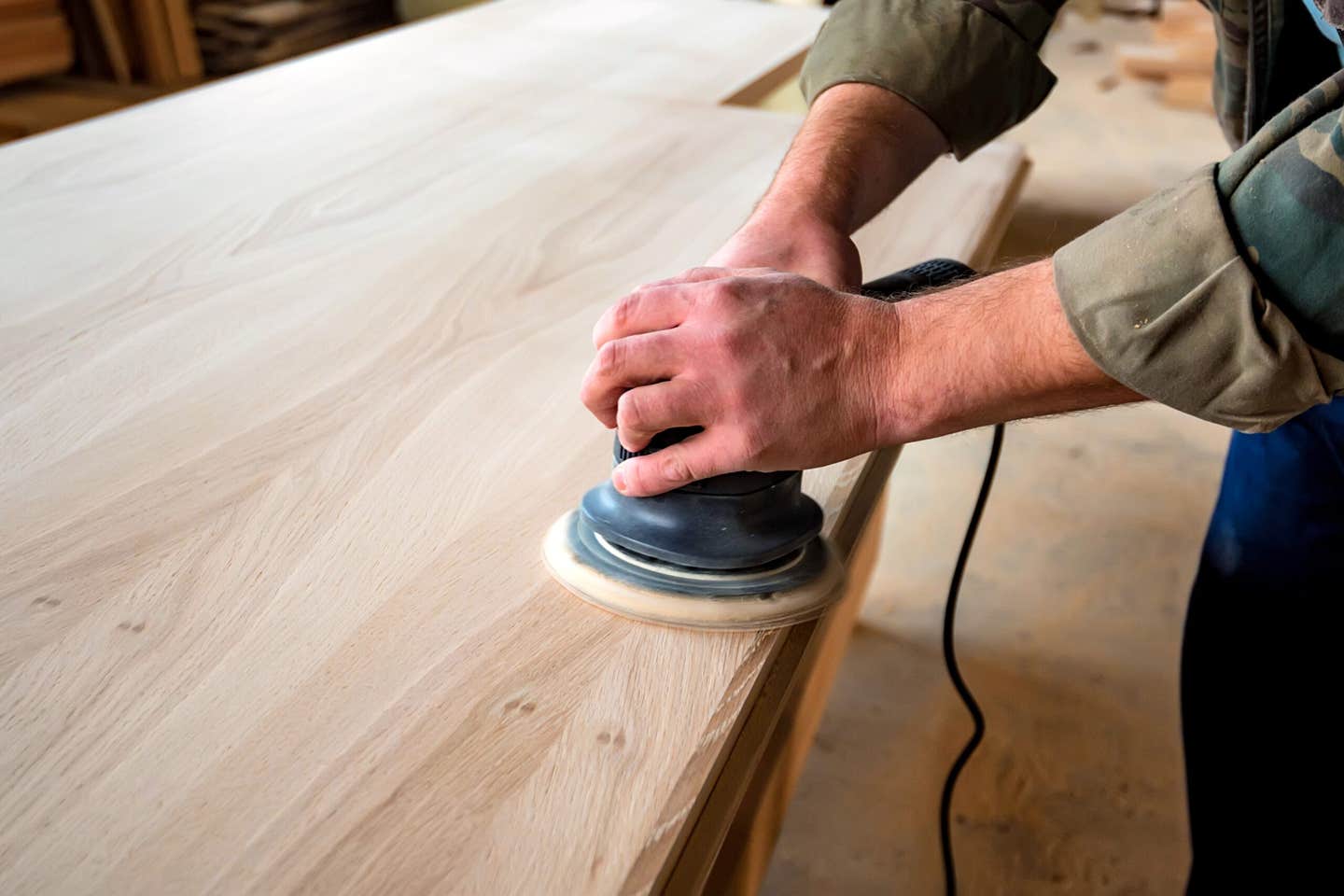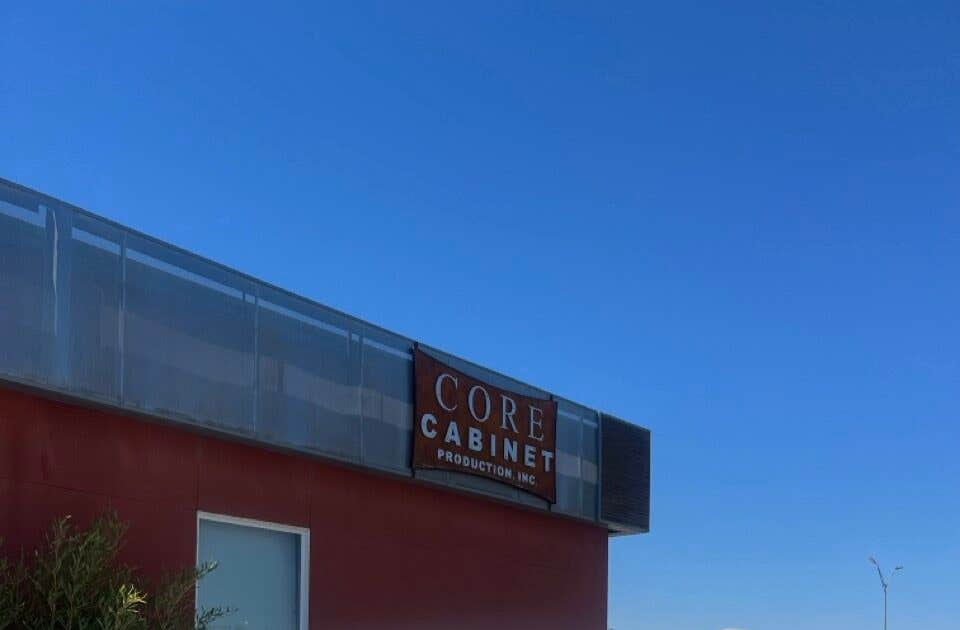Brush up on dust-collection systems
There are two ways to install a dust collection system in a small shop: either use one large central unit with lots of ductwork or buy several small dedicated units…
There are two ways to install a dust collection system in a small shop: either use one large central unit with lots of ductwork or buy several small dedicated units that serve just one or two machines. Given what we know today about the dangers of fine dust, the question is no longer whether to install a collection system, but rather which is the most efficient method. And, once that choice is made, there are several other options that need to be considered.
A little basic arithmetic can go a long way toward simplifying that first decision. Each woodworking machine requires a fairly predictable amount of vacuum to remove waste. To get to that number, one must first understand the relationship between the speed at which air travels through a collection system (velocity) and the amount of air being moved (volume). But before we go there, keep this in mind: most small dust collectors use filters to scrub the air before returning it to the shop. Such a system will leave several times as many fine particles in the shop (both airborne and on surfaces) as a large commercial collector that vents to the outside and constantly introduces fresh makeup air. Unfortunately, it costs a lot to heat or cool all that makeup air, so basic economics tend to remove that option for many small woodworking shops.
OK, back to arithmetic. Dust collectors are rated by the amount of air they move. That’s measured as a combination of speed and volume, which is expressed in terms of cubic feet per minute (cfm). Below are some rule-of-thumb figures for various small-shop machines (check your owner’s manuals for more specific data).
One can also guess at the volume required by measuring the diameter of the factory dust ports, but keep in mind that the manufacturer is limited to stock sizes (2-1/2”, 4”, 6”, etc.). On very small ports, Air Handling Systems (www.airhand.com) recommends using an adaptor to increase the port to 3”.
Thickness planers (20”) 600 to 800 cfm
Drum sanders 400 to 600 cfm
Belt sanders 400 to 600 cfm
Jointer (12”) 350 to 450 cfm
Shaper 350 to 450 cfm
Thickness planers (12 to 13”) 350 to 400 cfm
Jointer (6”) 350 to 400 cfm
Miter Saw (12”) 350 to 400 cfm
Disc sanders (12”) 300 to 500 cfm
Cabinet saws (10”) 300 to 400 cfm
Bandsaws (14”) 300 to 400 cfm
Midi lathe (12” swing) 300 to 400 cfm
Router tables 200 to 250 cfm
One can generally trust the size of the port when determining the size of the branch line (the hose that connects the machine to the main duct). For example, a 4” hose will carry about 350 cfm, while a 5” hose will handle around 550 cfm. The numbers aren’t definitive because of several factors, including the type of hose. A ribbed plastic one that droops or turns a corner is less efficient than a straight, smooth-sided metal duct, for example.
How much collector do I need?
The first step in sizing dust collectors is to add up the requirements of all the machines in the shop that will be run simultaneously. If it’s a one-man shop, then a collector that’s equal to or greater than the hungriest machine will suffice, as long as all of the machines have blast gates. In the chart above, a shop could have one of each of those machines and a dust collector that can handle 800 cfm will theoretically be big enough to handle everything as long as only one machine at a time is being used.
The critical element here is the blast gates. If the ductwork to several machines is unrestricted (no blast gates), then the same volume of air will eventually pass through the ductwork, but at a much slower speed. The slower air moves, the less efficiently it carries a load (that is, it keeps particles in suspension).
If it’s a two-man shop, then add together the requirements of the two largest machines to determine the minimum size of collector needed.
Well, that’s the theory, anyway. But nothing’s ever that easy, is it? For example, miter saws are rated at 350 to 400 cfm based on the diameter of the dust collection port, but many of them have restrictions inside the blade guard that cut down the volume of air, so a 4” diameter port on a miter saw is usually less efficient than the same size outlet on a jointer. They also create two different kinds of waste: a jointer creates heavy chips that are gravity-fed down through the housing of the machine into a dust collection port that is essentially mounted on the bottom. A miter saw creates fine, lightweight dust that is sucked up against gravity through a top-mounted port. So everything is an estimate.
Table saw dust collection on a cabinet saw is generally run though a hose connected to the side of the cabinet, but adding an overarm chute that also collects above the blade will dramatically improve dust control. The theory behind the lower hose is that the inside of the cabinet acts as a plenum, creating a vortex that keeps dust airborne long enough to enter the hose and be carried away. Most saws are pretty awful in this regard. The cabinet just fills up and needs to be emptied on a regular basis. In our shop, we added an air hose fitting to the side of one saw, so we can blow compressed air into the housing as the vacuum is running (see photo). It doesn’t completely solve the problem, but it does help quite a lot by dislodging compacted sawdust.
Sizing the main duct
Air Handling Systems, which designs and sells ductwork and collectors, recommends that the velocity of the air should be about 4,000 feet per minute (fpm) in branch ductwork between the machines and the main duct, and a minimum of 3,500 fpm in the main duct. Most of us will rely on the collector’s manufacturer to tell us that number, as measuring it is a bit of a challenge unless one has an engineering bent and access to an anemometer or a similar gauge.
While the factory ports on machines in large part determine the diameter of branch lines, sizing the main duct can be a little more precise. Pick the machine farthest from the dust collector and start the main duct there at the same diameter as the port on the machine. As each new machine enters the main duct, increase the diameter to accommodate it. Air Handling Systems gives the following guidelines for various main duct diameters:
Diameter cfm
3” 170
4” 300
5” 475
6” 700
7” 950
8” 1,200
9” 1,550
10” 1,900
12” 2,800
14” 3,800
A dust collection system is a series of parts assembled together to create a whole. Some of these parts are curved, some are vertical and others are made of differing materials (plastic, metal, etc.). Because of these anomalies, there is a loss of efficiency. This “resistance” is measured in static pressure loss and dust collectors are often rated using this number. For example, Grizzly Industrial advertises its G1029Z2P 2-hp collector as having 1,550 cfm at 11” of static pressure.
Before buying a small-shop collector, it’s a good idea to visit Air Handling System’s website and Oneida’s ductwork tutorial at www.oneida-air.com. One should also take a look at Bill Pentz’s extraordinarily informative site (www.billpentz.com), which will answer just about any technical questions you might have. These resources will walk a shop owner through cyclones, static pressure, filter bag options and a host of other topics that can help improve the dust control efficiency.
Going back to the initial question: should one install a single central unit or several dedicated smaller ones? A lot depends on the shop’s methods of work (lots of sanding?) and how many people work at the same time. The electricity to run one small unit at a time is less expensive than it is to fire up a big 10-hp motor whenever a single saw cut is made. However, emptying the bags on several small collectors can be time-consuming and that costs money, too.
The initial investment is an issue: nowadays, one can buy a pretty good high-powered cyclone for less than the cost of three or four separate and smaller units. But the ductwork on a single unit is more costly. And if a motor breaks down, having several smaller units means that there are more options and less downtime.
One final thought: dust control isn’t only about dust collectors. Downdraft tables and ceiling-mounted shop air filters can go a long way toward eliminating contaminants, especially in a small shop. And portable power tools that come with efficient built-in collection, such as Festool’s orbital models or Grizzly’s G0538 spindle sander, can virtually eliminate dust at the source.
This article originally appeared in the July 2012 issue.







